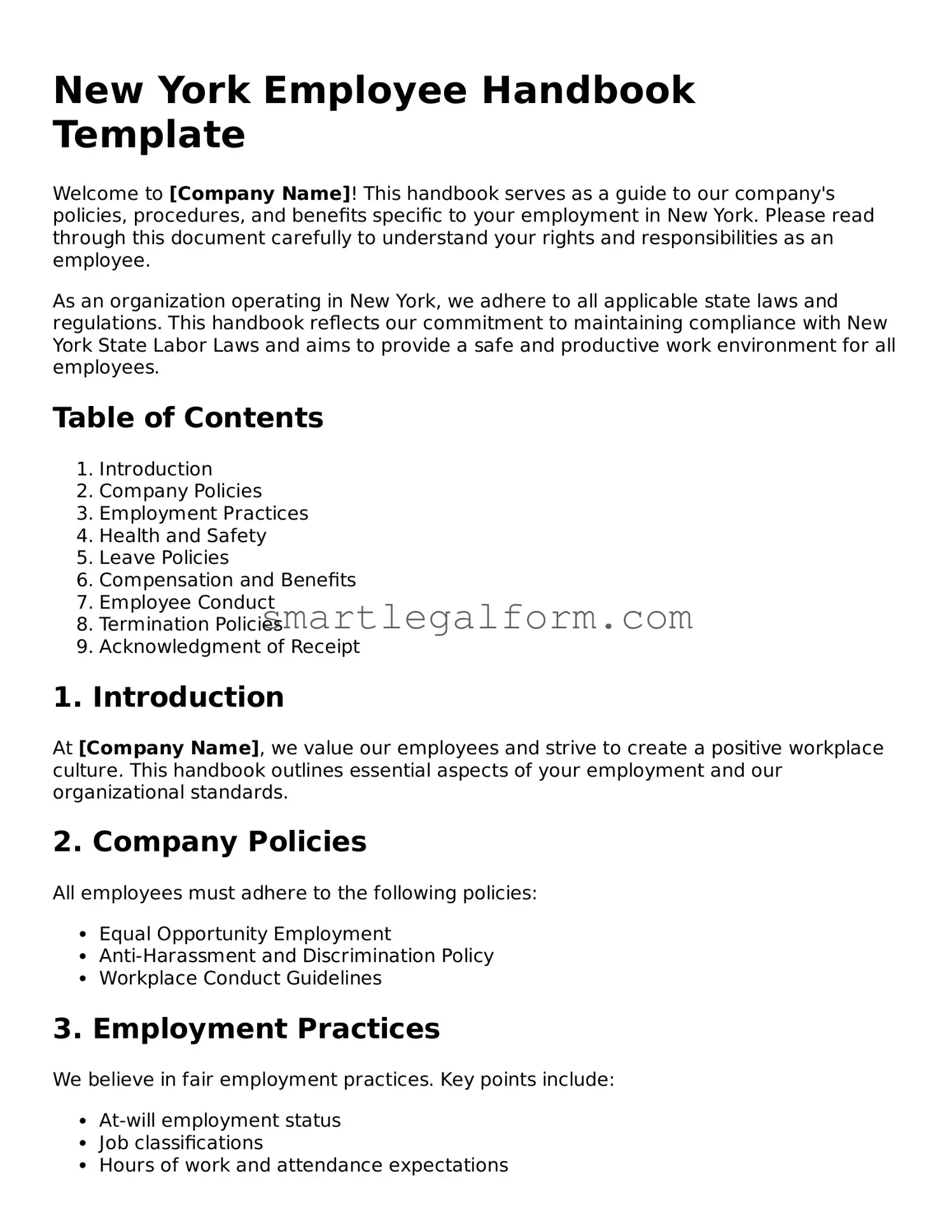New York Employee Handbook Template
Welcome to [Company Name]! This handbook serves as a guide to our company's policies, procedures, and benefits specific to your employment in New York. Please read through this document carefully to understand your rights and responsibilities as an employee.
As an organization operating in New York, we adhere to all applicable state laws and regulations. This handbook reflects our commitment to maintaining compliance with New York State Labor Laws and aims to provide a safe and productive work environment for all employees.
Table of Contents
- Introduction
- Company Policies
- Employment Practices
- Health and Safety
- Leave Policies
- Compensation and Benefits
- Employee Conduct
- Termination Policies
- Acknowledgment of Receipt
1. Introduction
At [Company Name], we value our employees and strive to create a positive workplace culture. This handbook outlines essential aspects of your employment and our organizational standards.
2. Company Policies
All employees must adhere to the following policies:
- Equal Opportunity Employment
- Anti-Harassment and Discrimination Policy
- Workplace Conduct Guidelines
3. Employment Practices
We believe in fair employment practices. Key points include:
- At-will employment status
- Job classifications
- Hours of work and attendance expectations
4. Health and Safety
Your safety is a priority. The following practices are in place to ensure a healthy work environment:
- Emergency evacuation procedures
- Reporting workplace hazards
- Use of personal protective equipment (PPE)
5. Leave Policies
Employees may be eligible for various leave options, including:
- Paid Time Off (PTO)
- Sick Leave
- Family and Medical Leave Act (FMLA)
6. Compensation and Benefits
Our compensation structure includes:
- Salary and hourly wage policies
- Health insurance options
- Retirement savings plans
7. Employee Conduct
All employees are expected to maintain professional behavior. Examples include:
- Respectful communication
- Punctuality and reliability
- Confidentiality of company information
8. Termination Policies
Termination of employment can occur for various reasons, including:
- Resignation
- Performance issues
- Company reorganization
9. Acknowledgment of Receipt
By signing below, you acknowledge that you have received, read, and understood the [Company Name] Employee Handbook.
Employee Name: [_________________]
Employee Signature: [_________________]
Date: [_________________]
Thank you for being a part of [Company Name]. We look forward to working together to achieve our goals!
